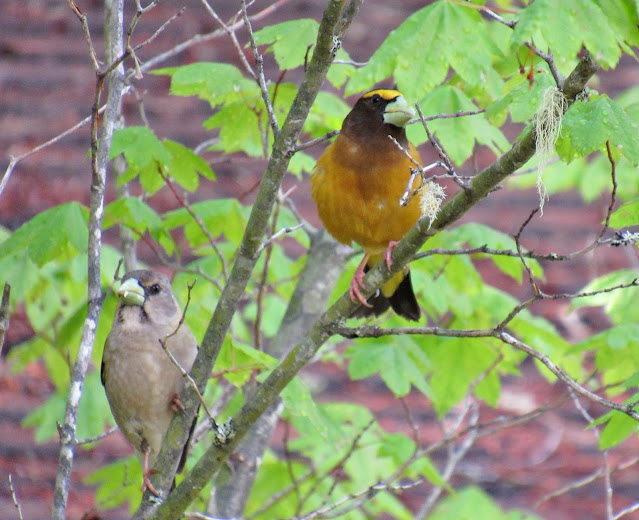The Mountains are Calling: Mount Rainier
Next stop on our summer roadtrip through the Pacific Northwest: Mount Rainier National Park!
Catch up on our summer travels here:
Part I: Seabird Colony at Haystack Rock
Part II: Birding the Pacific Northwest Coast
Part III: Inland Valley and Lowland Forests
Part IV: Olympic National Park
Part V: North Cascades National Park
Part VI: Mount Rainier National Park
Part VII: Crater Lake National Park
Way back in June, we spent a couple of nights camping in Mount Rainier National Park. The perks of visiting the park early in the season were very light crowds, quiet trails, and the opportunity to catch birds early in their breeding season. The pitfalls of visiting at this time, however, were significant: deep snow made hiking the iconic high-elevation trails around the mountain impossible, the wildflowers were not yet blooming, and... it rained. A lot.
But we still thoroughly enjoyed ourselves, as we hiked in the atmospheric forests and explored crashing waterfalls at lower elevations. The mountain emerged from the clouds for a period of time each day that we were there, and the birds were abundant: what more could we ask for, really?
At the higher elevations around Paradise, we encountered Canada Jays, White-crowned Sparrows, Dark-eyed Juncos and Warbling Vireos, despite the snow.
 |
| Inquisitive Canada Jay (one of my new favorite birds!) |
Much like the other parks we visited in the Pacific Northwest, American Robins were hands-down the most abundant birds in the mid-elevation forests around Mount Rainier - especially in the campgrounds and picnic areas! Also present in large numbers - though more often heard than seen - were Pacific Wrens, and both Varied and Swainson's Thrushes.
Western Tanagers, Steller's Jays, Dark-eyed Juncos, and Violet Green and Barn Swallows were abundant in the vicinity of Longmire and Cougar Rock campground, and we encounterd a large flock of Band-tailed Pigeons hanging out in Longmire Meadow.
The most exciting birds, for me, were a small flock of Evening Grosbeaks we discovered hanging around the historic buildings of Longmire. This was one of my target birds for the trip, so I was overjoyed to hear one calling within minutes of getting out of the car, and delighted to spot the singing bird a moment later! We had several encounters with Evening Grosbeaks during our visit to the park, but by far my favorite occurred just as we were on our way out of the park. We stopped by the inn in Longmire to try once more for a decent photo of a grosbeak (heretofore it had been too wet, rainy and cloudy to manage a very good shot).
 |
| Female (left) and male Evening Grosbeak, engaged in a courtship ritual. |
I spotted this pair of Evening Grosbeaks in the midst of their tender courtship ritual, and was able to quietly watch them for five or ten minutes as they moved around the area, always together, the male doing his utmost to woo his beloved by feeding her and, yes, even dancing for her.
 |
| Capturing the affection of his mate through wing-flutters and tail-bobs. |
Don't they make a handsome couple?
Evening Grosbeaks feed largely on invertebrates during the summer months, as well as a wide variety of the seeds, buds and fruits of many forest trees. In the winter, flocks of grosbeaks may visit the feeders of very lucky folks who live in forested areas across most of the U.S.!
We left Mount Rainier National Park with our camping gear still slightly soggy, but our souls washed and renewed by the beauty of the majestic mountains!
Part I: Seabird Colony at Haystack Rock
Part II: Birding the Pacific Northwest Coast
Part III: Inland Valley and Lowland Forests
Part IV: Olympic National Park
Part V: North Cascades National Park
Part VI: Mount Rainier National Park
Part VII: Crater Lake National Park














Comments
Post a Comment